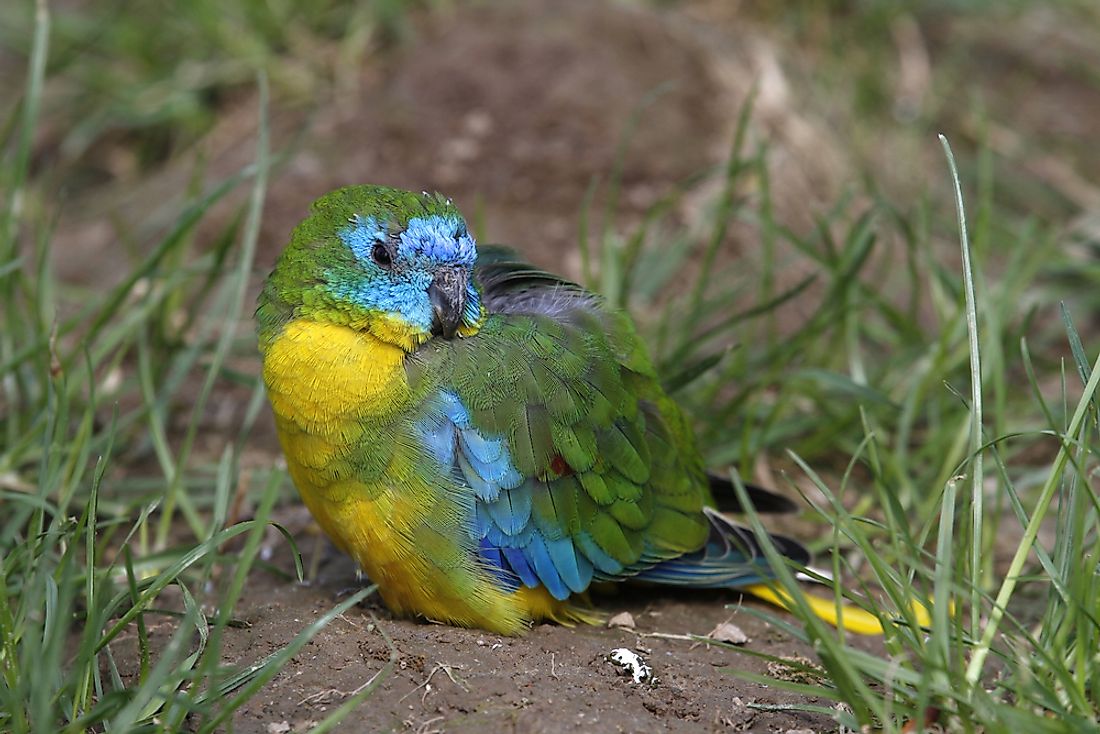Turquoise Parrot: Facts: Animals Of Oceania

The turquoise parrot (Neophema pulchella), native to Eastern Australia, was discovered by George Shaw in 1792.
5. Reproduction
In order to attract the female, the male turquoise perches upright on a tree stump. Then it shows off the red and blue markings on its wings. Once paired, the male and female look for a nesting site where they can breed. Breeding among the turquoise parrots takes place during the warmer months. The females lay eggs at intervals of two to three days in August to January. The female turquoise incubates the eggs and broods the young parrots. The male and female turquoises take part in feeding the young. They feed the young birds with seeds and some fruits. They are ready to leave the nests by the 23rd day.
4. Behavior
Turquoise parrots are gregarious by nature. They are social birds that mostly spend time in pairs or small family groups. They forage on or near the ground. During the hot parts of the day, turquoise parrots rest quietly in trees. They are approachable animals but in case one draws close to them, they only fly to a nearby tree. Regarding their calls, the turquoise parrots make high-pitched, soft contact calls when feeding or during flight. On the other hand, the description of their alarm calls is a high-pitched zitting call.
3. Habitat and Range
The turquoise parrot lives in the foothills of the Great Dividing Range in Eastern Australia. Examples of parts of Australia where the turquoise bird inhabits are southeastern Queensland (Cooloola, Chinchilla, and Blackbutt), St. George, New South Wales, and Victoria (Wangaratta and East Gippsland). The bird inhabits open and savanna woodland. It prefers rocky gullies and ridges. Sometimes the turquoise bird may live in grassland or fields found in cultivated areas. The parrot is sedentary which means it seldom migrates. However, in some instances it the turquoise may be locally nomadic.
2. Diet
Turquoise parrots are ground-based seed-eaters. They forage in pairs or small troops. At Chiltern in Victoria, the birds feed in groups of 5-30 during winter and 6-8 in the summer. The birds mostly feed from early morning to late afternoon. They like to feed in shades so that they camouflage in the grass. The turquoise parrots eat grass and shrub seeds, flowers, fruits, nectar, spores, leaves, scale insects, and the seeds of some plant species such as guinea flower, raspwort, and daphne heath.
1. Physical Description
The turquoise parrot is a species of parrot which is lightly built. It is about 20 cm long and weighs 40 g. The parrot exhibits sexual dimorphism whereby the male and female sexes possess different characteristics beyond their sexual organs. Both the male and female turquoise have predominantly yellow underparts and green upper parts. However, the male parrot has a bright turquoise-blue face, slightly paler lores, ear, and cheeks coverts. Furthermore, the male turquoise has a grass-green tail, bright blue wings, orange patches on the belly, and band of red on the shoulder. The female turquoise paler blue face lacks the red shoulder band and has less distinct shoulder markings. It has a yellow belly, pale brown-grey mandible, and pale green chest and throat.







